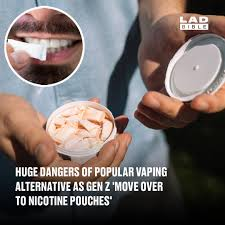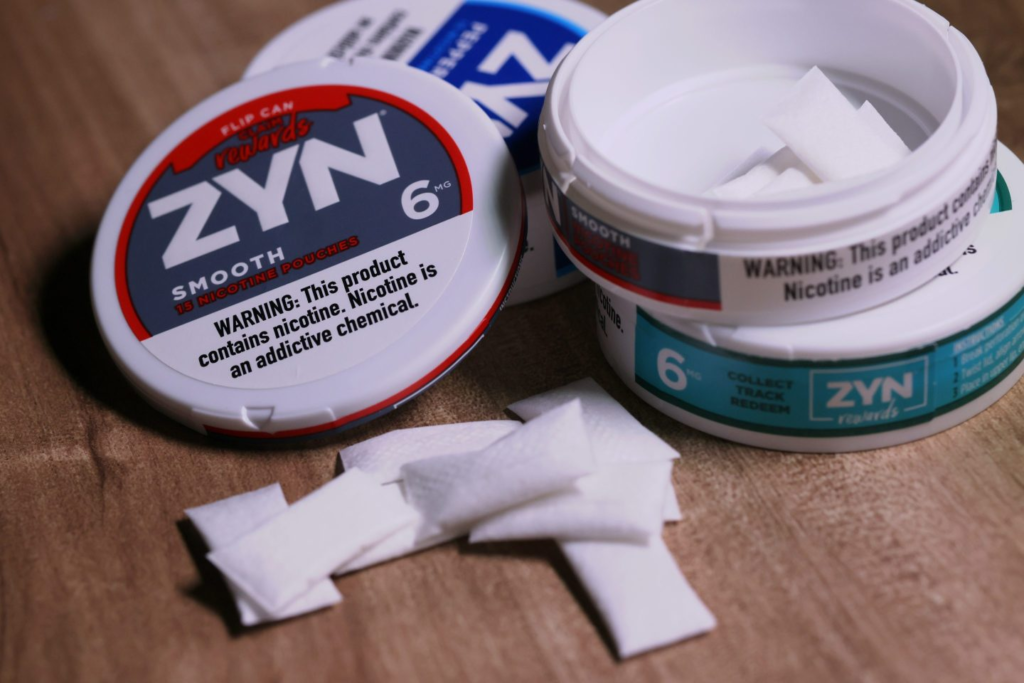In recent years, a new trend has taken hold among younger generations in the United States: nicotine pouches. These small, discreet, tobacco-free products are quickly becoming a go-to choice for Millennials and Gen Z, who are seeking smoke-free alternatives to traditional cigarettes and vaping. With their sleek packaging, variety of flavors, and promise of a cleaner nicotine experience, nicotine pouches are reshaping how young adults consume nicotine. But what’s driving this surge in popularity, and what does it mean for public health and lifestyle trends? Let’s dive into the rise of nicotine pouches and why they’re capturing the attention of today’s youth.

What Are Nicotine Pouches?
Nicotine pouches are small, white sachets filled with nicotine, plant-based fibers, flavorings, and sweeteners. Unlike traditional tobacco products like cigarettes, chewing tobacco, or snus, they contain no tobacco leaves. Users place a pouch between their gum and upper lip, where it releases nicotine into the bloodstream through the mouth’s mucous membranes. The experience is smokeless, odorless, and spit-free, making it a discreet option for nicotine consumption.
Introduced to the market around 2014, nicotine pouches have steadily grown in popularity over the past decade. Brands like Zyn, On!, Velo, and Rogue have become household names, offering a range of nicotine strengths from 1.5 mg to 15 mg and flavors like mint, citrus, berry, and even coffee or tropical fruit. This variety allows users to customize their experience, appealing to a generation that values personalization and convenience.
Why Are Millennials and Gen Z Drawn to Nicotine Pouches?
Millennials (born 1981–1996) and Gen Z (born 1997–2012) are driving the nicotine pouch trend for several reasons. These generations are known for their health-conscious lifestyles, tech-savvy nature, and desire for products that fit seamlessly into their fast-paced, urban lives. Here’s why nicotine pouches resonate with them:

- Health-Conscious Choices
Both Millennials and Gen Z prioritize wellness, with many engaging in fitness routines, clean eating, and mindfulness practices. However, nicotine use remains prevalent, creating a paradox. Nicotine pouches offer a perceived “healthier” alternative to smoking, which is associated with serious health risks like lung cancer and heart disease. Because pouches are tobacco-free and eliminate the harmful chemicals found in cigarette smoke, they align with the wellness trends these generations embrace. For example, a 2024 report noted that 92% of nicotine pouch users reported improved well-being after switching from cigarettes, citing the absence of secondhand smoke as a key benefit. - Discreet and Convenient
Nicotine pouches are small, portable, and easy to use anywhere. Unlike cigarettes, which require lighting up and produce smoke, or vapes, which create visible vapor, pouches are odorless and vaporless. This makes them ideal for settings where smoking or vaping is prohibited, such as workplaces, public transportation, or social gatherings. For Gen Z, who value flexibility and mobility, the ability to use a pouch discreetly in class, at work, or even during a meeting is a major draw. The pouches’ sleek, minimalist packaging also appeals to design-conscious young adults. - Social Acceptance
Smoking has become less socially acceptable in recent years, with public smoking bans and campaigns highlighting its dangers. Nicotine pouches, on the other hand, don’t produce secondhand smoke or lingering odors, making them a more socially acceptable option. For Millennials with socially responsible ethics, pouches align with their desire to reduce environmental and health impacts. The lack of smoke also means users can enjoy nicotine without bothering those around them, further boosting their appeal. - Flavor Variety and Customization
Young adults love products that offer personalization, and nicotine pouches deliver. With flavors ranging from classic mint and menthol to exotic options like tropical fruit and coffee, users can choose a pouch that suits their mood or taste. Nicotine strengths also vary, allowing beginners to start with low doses (1.5–3 mg) and heavy smokers to opt for stronger options (10.5–15 mg). This customization makes pouches feel like a lifestyle product rather than a traditional tobacco item. - Social Media and Celebrity Influence
Social media platforms like TikTok and Instagram have played a significant role in popularizing nicotine pouches. So-called “Zynfluencers” share videos of themselves using pouches, comparing flavors, and demonstrating how to use them. High-profile moments, like athletes or public figures being spotted with pouches, have also fueled their popularity. For instance, in 2025, social media buzzed when a prominent figure was seen using a pouch during a televised event, sparking conversations about the product’s cultural relevance.
The Impact on Public Health
The rise of nicotine pouches has sparked both optimism and concern among health experts. On one hand, pouches are seen as a harm-reduction tool for adult smokers. Because they lack the harmful chemicals found in tobacco smoke, they may pose fewer risks than cigarettes or traditional smokeless tobacco. A 2024 study highlighted that nicotine pouches have lower levels of carcinogens compared to chewing tobacco or snus, making them a potentially safer option for those already using nicotine.

Additionally, pouches are helping some smokers quit. A 2024 survey found that 80% of nicotine pouch users switched from cigarettes or other tobacco products to quit smoking or improve their lifestyle. By providing a similar nicotine “kick” without the need to light up, pouches help curb cravings and ease withdrawal symptoms, supporting smokers in their journey to quit.
However, nicotine pouches are not risk-free. Nicotine is highly addictive, and long-term use can lead to dependence. Health experts warn that pouches may cause oral health issues, such as gum irritation or recession, though evidence is still emerging. There’s also concern about their appeal to non-smokers, particularly young people. The colorful packaging, candy-like flavors, and social media hype could attract teens and young adults who have never used nicotine, potentially leading to addiction. A 2025 study noted that nicotine pouch use among high school students nearly doubled from 2023 to 2024, raising alarms about youth access.
Regulatory Challenges and Future Outlook
The rapid rise of nicotine pouches has caught the attention of regulators. In the U.S., the Food and Drug Administration (FDA) recently authorized the marketing of certain pouch products, like Zyn, after reviewing evidence that they offer public health benefits compared to cigarettes. However, pouches are not as tightly regulated as other tobacco products, creating a gray area. Some states and countries, like Belgium and the Netherlands, have banned nicotine pouches due to concerns about youth appeal and high nicotine levels.
Flavor bans are another hot topic. While flavors help smokers switch to pouches, critics argue they attract young non-smokers. A 2024 report emphasized that flavors are critical for helping adults quit smoking, but 83% of U.S. consumers surveyed opposed flavor bans, valuing their freedom to choose. Policymakers face the challenge of balancing harm reduction for adult smokers with preventing youth addiction.
Looking ahead, the nicotine pouch market is expected to grow significantly. Global market analysis predicts substantial expansion as more adults seek tobacco-free alternatives. Retailers are struggling to keep pouches in stock, and e-commerce platforms report that 81% of pouch purchases are made online, with older users (65+) being surprisingly tech-savvy buyers. As the industry innovates with new flavors, biodegradable pouches, and varied release rates, nicotine pouches are likely to remain a staple for Millennials and Gen Z.
A Cultural Shift Toward Smoke-Free Living
The popularity of nicotine pouches reflects a broader cultural shift among Millennials and Gen Z toward healthier, more sustainable lifestyles. These generations are redefining nicotine consumption, moving away from the smoky, stigmatized image of cigarettes to a cleaner, more discreet alternative. For many, pouches are not just a nicotine delivery system but a lifestyle choice that aligns with their values of wellness, convenience, and social responsibility.
However, the rise of nicotine pouches also underscores the need for education and responsible use. While they offer a promising alternative for smokers, their addictive nature and appeal to youth require careful oversight. As the debate over regulation continues, one thing is clear: nicotine pouches are here to stay, shaping the future of nicotine use for a new generation.
Also Know :- Digital Product Passports: Revolutionizing E-Commerce and Sustainability






